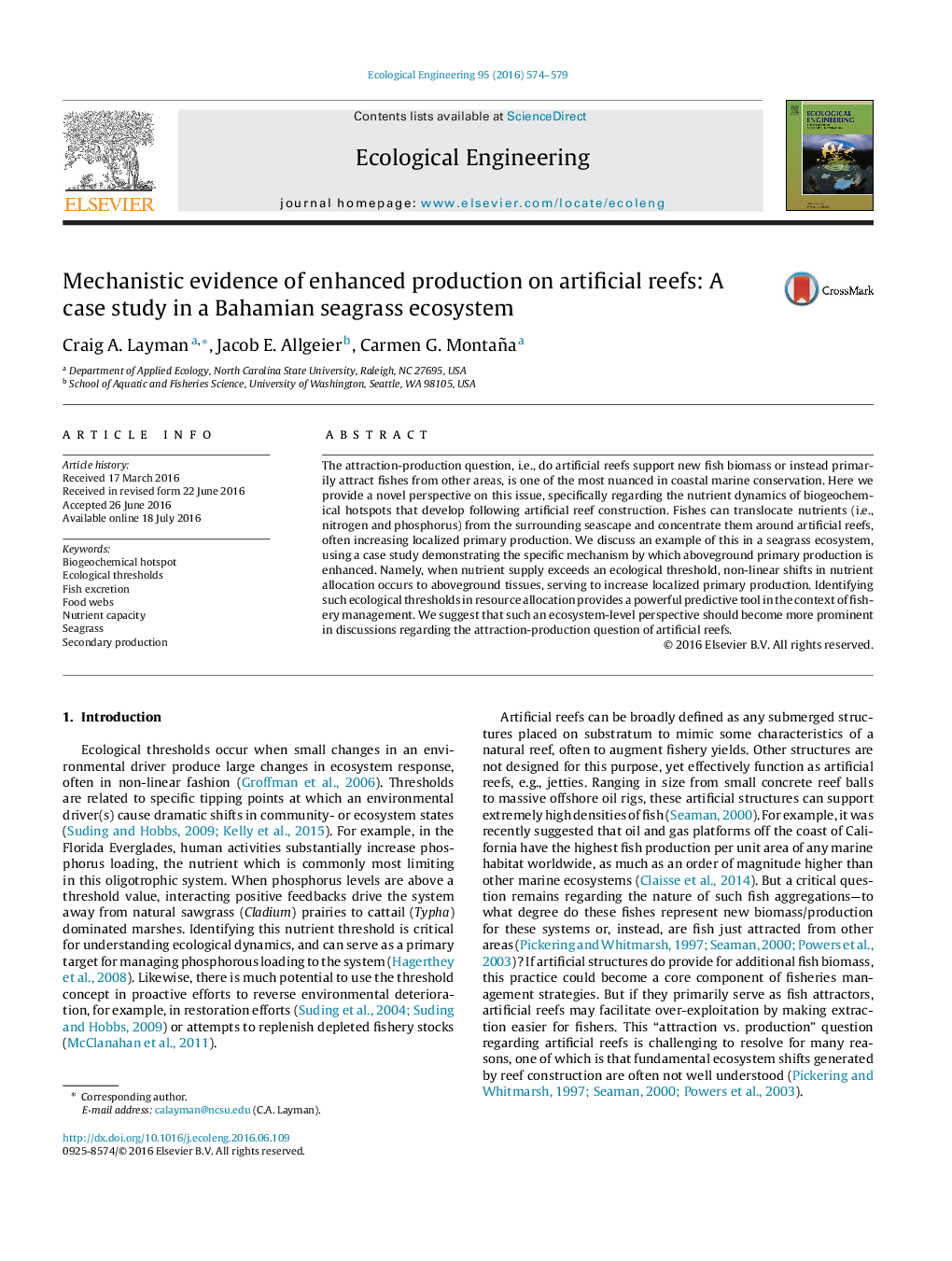| Article ID | Journal | Published Year | Pages | File Type |
|---|---|---|---|---|
| 4388486 | Ecological Engineering | 2016 | 6 Pages |
The attraction-production question, i.e., do artificial reefs support new fish biomass or instead primarily attract fishes from other areas, is one of the most nuanced in coastal marine conservation. Here we provide a novel perspective on this issue, specifically regarding the nutrient dynamics of biogeochemical hotspots that develop following artificial reef construction. Fishes can translocate nutrients (i.e., nitrogen and phosphorus) from the surrounding seascape and concentrate them around artificial reefs, often increasing localized primary production. We discuss an example of this in a seagrass ecosystem, using a case study demonstrating the specific mechanism by which aboveground primary production is enhanced. Namely, when nutrient supply exceeds an ecological threshold, non-linear shifts in nutrient allocation occurs to aboveground tissues, serving to increase localized primary production. Identifying such ecological thresholds in resource allocation provides a powerful predictive tool in the context of fishery management. We suggest that such an ecosystem-level perspective should become more prominent in discussions regarding the attraction-production question of artificial reefs.
